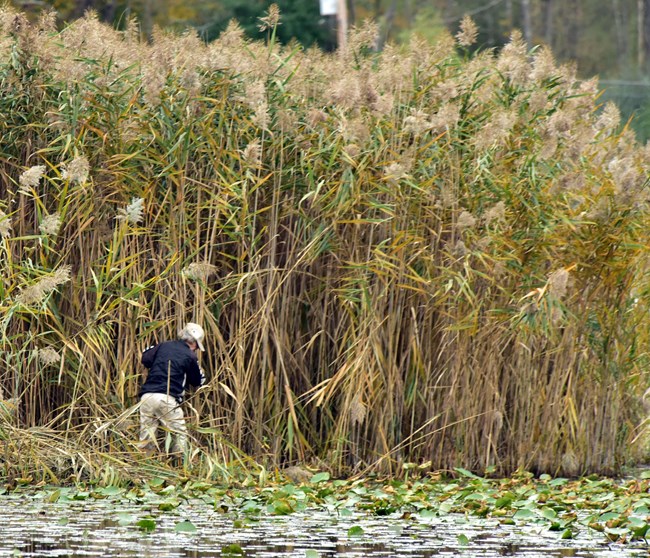
© J.J. Prekop, Jr. Common Reed, Phragmites australisPhragmites is a perennial rhizomatous grass. It is usually considered a wetland species and is often found in disturbed areas. IdentificationPhragmites has slender, lanceolate leaves 8 to 12 inches long. It can grow up to 18 feet and produces a large cluster of dense floral spikelets. Common reed occurs in dense mats up to 300 stems per square yard. OriginPhragmites is found on every continent except Antarctica. Fossil records show that the species has been present in North America for thousands of years. Changes in land use patterns, hydrologic regimes, pollution, and urbanization of the landscape over the last few centuries may have set the stage for Phragmites to act as an invasive species. How It SpreadsCommon reed can reproduce by seed, but most reproduction occurs underground through root-like structures called rhizomes. Control MethodsCutting, digging, or pulling can be done in late July. Cut plants should be bagged and removed from the site to prevent re-sprouting. |
Last updated: March 2, 2022
